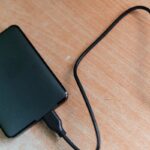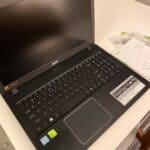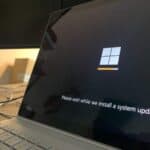Installing an SSD can breathe new life into an old computer or give a new one the speed it needs. The process is simple and can be done in a few steps. This guide will take you through what you need to do to install an SSD in your desktop PC.
Start by gathering your tools: a screwdriver, your new SSD, and the necessary cables. Turn off your computer and unplug it from the power source. Open the computer case and locate the drive bay where you’ll install the SSD.
Carefully connect the SSD to the motherboard. Attach the SSD to the drive bay using the screws provided. Close the case and plug in your computer. Turn it on and follow the steps to set up your new drive.
Key Takeaways
- Gather your tools and turn off your computer.
- Connect the SSD to the motherboard and attach it securely.
- Close the case and set up the new drive.
Preparing for SSD Installation
Choosing the right SSD type, gathering the necessary tools, protecting against static electricity, and backing up data are key steps to prepare for the installation.
Understanding SSD Types and Compatibility
There are several types of SSDs, with SATA and M.2 being the most common. SATA SSDs, like the 2.5-inch form factor ones, connect via SATA cables and fit standard drive bays. M.2 SSDs are smaller and fit into M.2 slots on the motherboard. These come in different lengths, so ensure compatibility with your PC’s motherboard. NVMe SSDs are a type of M.2 SSD that offer faster speeds due to using the PCIe interface.
Gathering Required Tools and Materials
Before starting, gather the tools and materials you’ll need. A screwdriver is essential for securing the SSD and possibly removing panels. You might also need a SATA-to-USB cable if you’re cloning your current drive to the new SSD. If installing a 2.5-inch SATA SSD in a desktop, you may need a bracket to secure the drive in a larger bay. Check your computer’s manual for any specific requirements or additional tools.
Ensuring Safety Against Static Electricity
Static electricity can damage sensitive components, so it’s crucial to take precautions. Use an anti-static wrist strap to ground yourself or touch a grounded metal object frequently during the installation. Avoid working on carpeted surfaces and in environments prone to static buildup. Wearing cotton clothes can also reduce static. Handle the SSD and other components by their edges to prevent static discharge.
Backing Up Important Data
Before installing the SSD, back up all important data. This ensures you don’t lose any files in case something goes wrong during the installation. You can use an external hard drive, cloud storage, or another backup method. If you’re planning to clone your current drive to the new SSD, having a backup also provides a safety net in case the cloning process encounters issues. Proper backups protect your data and provide peace of mind.






